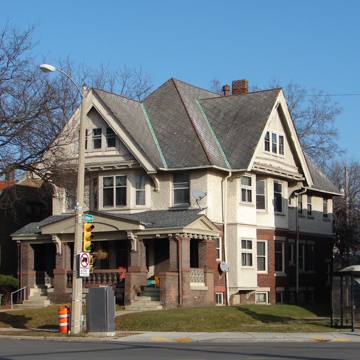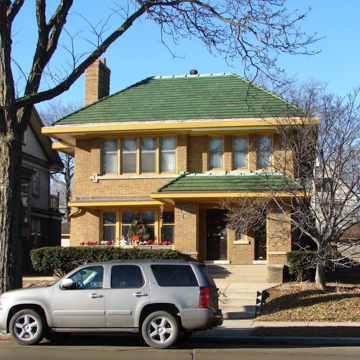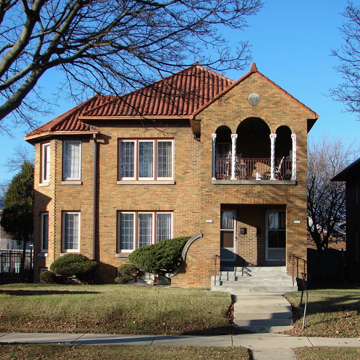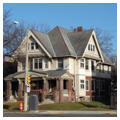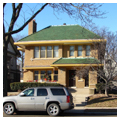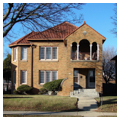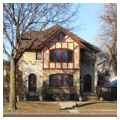Interspersed among single-family houses in the Sherman Boulevard historic district is a fine collection of early-twentieth-century two-family housing units called Milwaukee duplexes. The Milwaukee duplex is a large two-family dwelling with one unit stacked upon the other, and most were owner-occupied rental units. Duplexes establish the character of many older city neighborhoods and reflect periods of vigorous growth. The Sherman Boulevard examples, built mainly between the world wars, include many popular residential architectural styles. All duplexes in this group reflect better-quality construction, and many provide high standards of comfort and detail.
Thousands of duplexes were built in the city between the late 1880s and 1940. Most are big, two-and-a-half-story structures with steeply pitched roofs, side dormers, a large front porch, and paired or symmetrically placed front doors. A good Arts and Crafts example of this basic form, the Philip Schmidt Duplex (1909) is on the older, south end of the boulevard at number 2124–2126. A striking Prairie Style duplex (1916; 2319–2321 Sherman) exhibits superior construction, including Roman bond brick walls, a green terra-cotta roof, and copper trim. Another Prairie Style luxury duplex (1923) is the brick-and-stucco example at number 2763–2765. With its deep overhangs and massive planting urns on the front porch, the building recalls the designs of Frank Lloyd Wright.
Mediterranean Revival style duplexes abound in the district. One eye-catching example, the Jacob Ulevich Duplex (1929; 3055–3057 Sherman), has dramatic ornamental brick corbeling embellishing its eaves. The Levy Brothers’ Duplex (1929) at number 3157–3159 features an open second-story porch. Of several Tudor Revival duplexes the pairs at 3109–3111 Sherman (1935) and at 3263–3265 (1928) are brick trimmed with half-timbering.


